Let me try to run through a little of why I'm here. The project I'm here to work on is called IceCube. IceCube is an array of about 80 vertical sets of 60 photo collectors buried in the ice here at the South Pole. Each photo collector is like a sophisticated digital camera--it detects photons (light) in the ice and tells us up on the surface about it. These are called Digital optical Modules (DOMs). The array is a cubic kilometer and is buried between 1.5 km and 2.5 km down under the ice. At those depths the ice is nearly perfectly clear from having so much pressure pushing down on it from above. On top of each vertical string of 60 DOMs there are four more DOMs buried in a tank of ice. This set of DOMs in tanks on top is called IceTop, and that's really the part of IceCube that I'm working on.
My mission is to help get our DOMs positioned in our tanks in their correct locations, and then fill them with water and freeze it perfectly clear. That doesn't sound so hard, does it? Well there are a lot of steps in this process. My first day here I spent time just preparing the tanks. They each have panels on the outside which are insulating and will help the electronics to stay warm and functional when we're freezing the water inside.
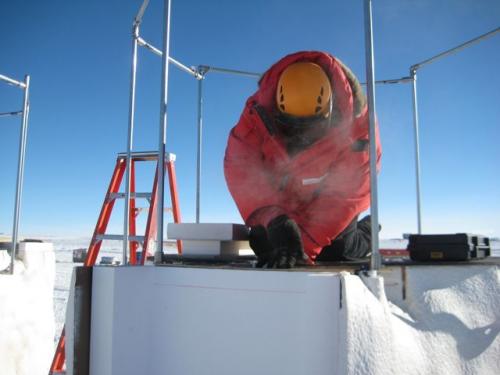
To make the insulating doors, we needed to put soft fleece on the door panels so they don't let a draft in.
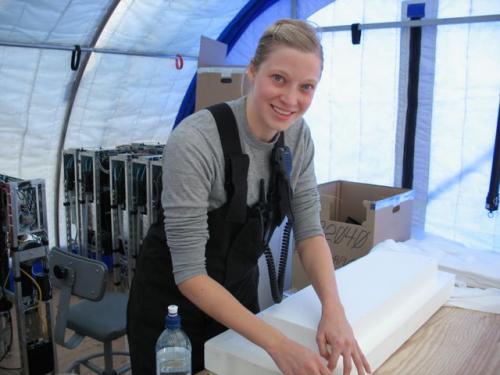
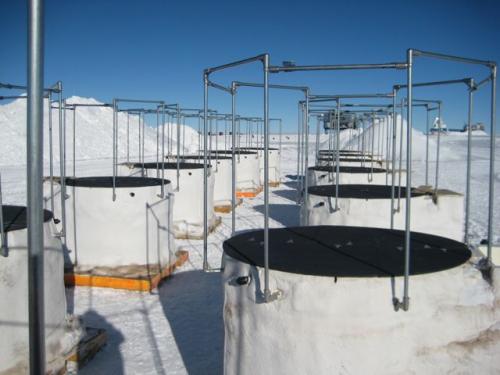
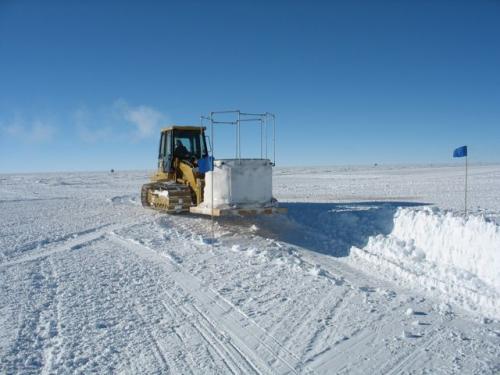
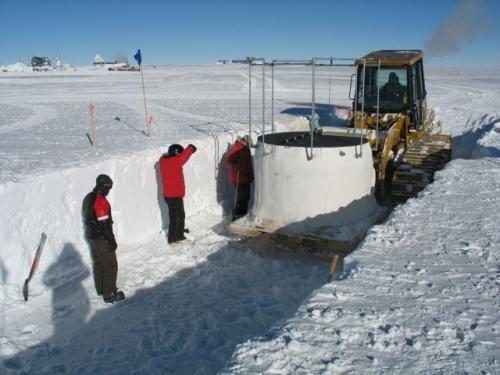
Now we need to prepare the DOMs to hang in the tank. Later the tanks will be filled with water and the DOMs frozen into place.
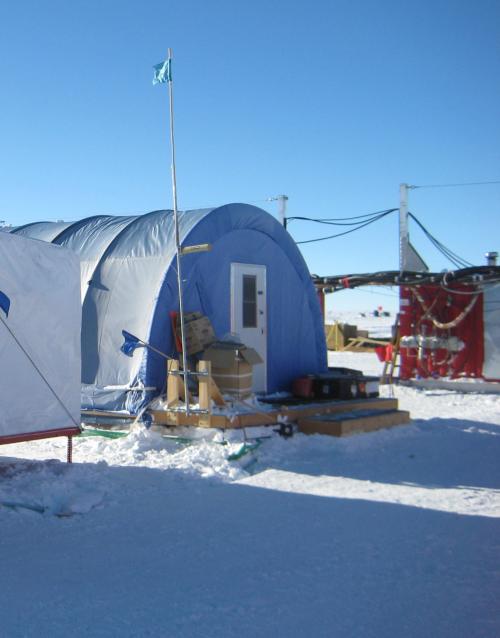
We need to attach each DOM to a board that will be suspended in the top of the tank.
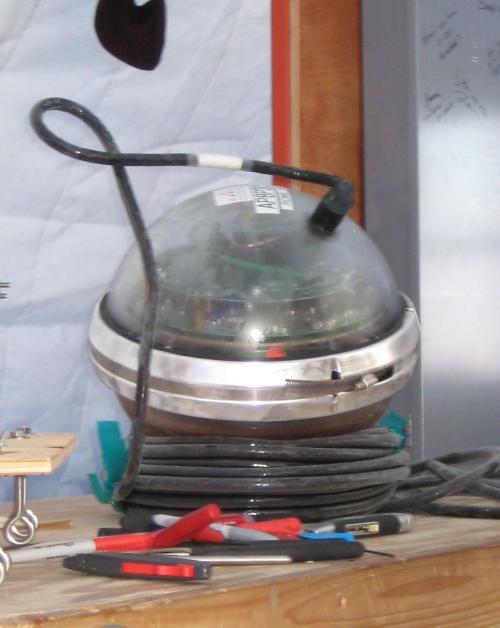
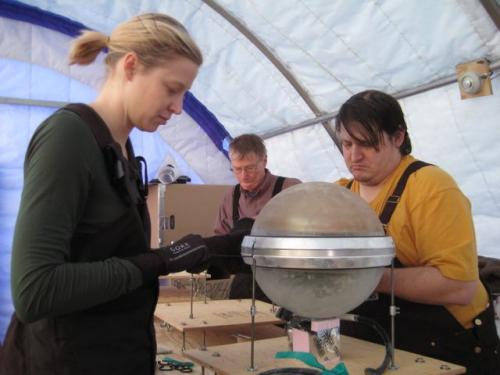
Next we take the DOMs in their boxes out to the tanks. The DOMs are suspended two per tank into the the top of the tank. 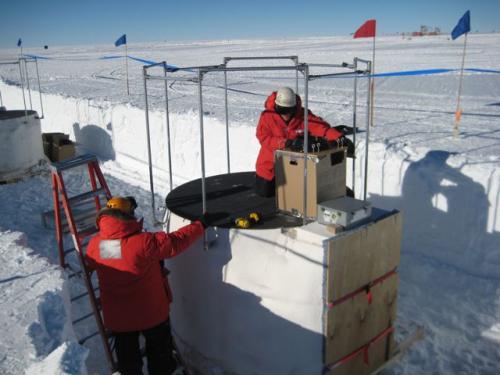
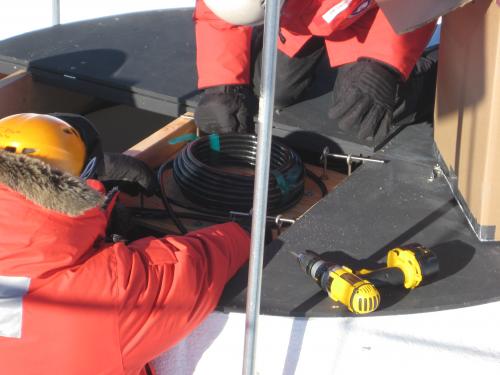
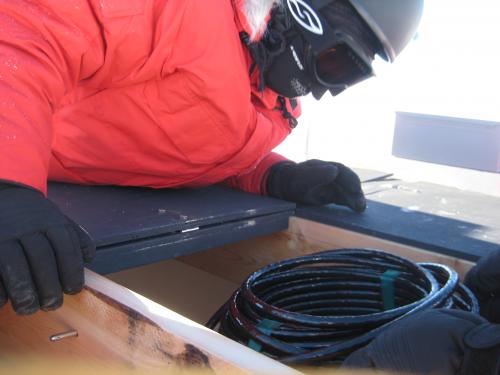
The two DOMs in each tank are attached to a power supply and freeze control unit (FCU) and then to a junction box which will communicate back to the IceCube Lab.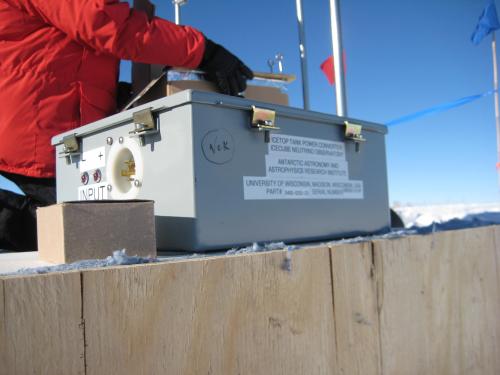
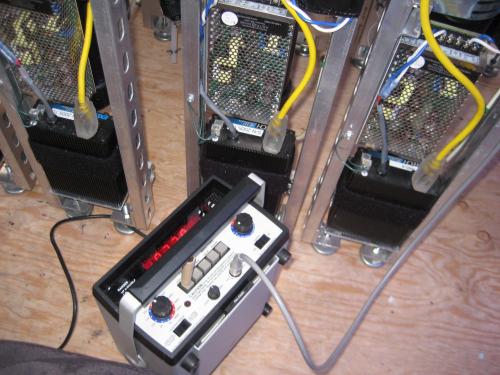
Next up is connecting the tanks and DOMs to the IceCube Lab (ICL). The lab is the main hub for all the IceCube and IceTop computers. It is staffed all year round (even through the austral winter.) To get the cables connected they have to be buried in trenches, then taken to the ICL and strung up the towers and into the computer banks. That's hard work! Each cable is massive and very stiff from the cold. We have to manhandle them into the trenches and up the towers with people-power only.
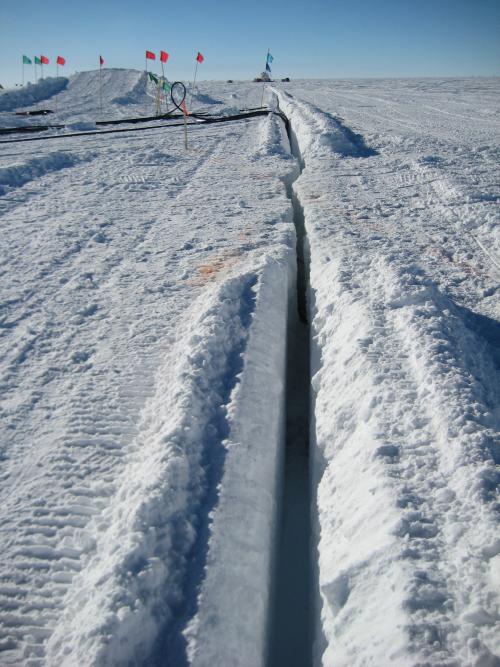
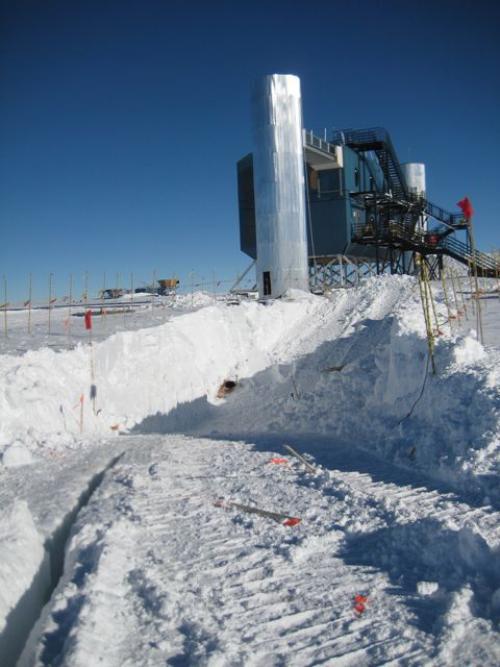
Finally once all the electronics are in, the water is in and the cables are connected it's time to freeze. Eventually the wooden braces are removed and the DOMs frozen in the ice tank collecting data.
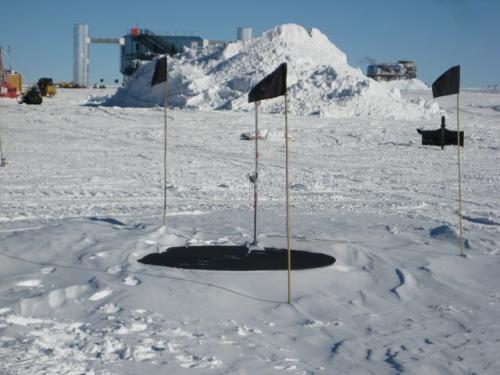
All of the IceTop tanks and the IceCube holes are completely covered by snow in just a few months-or they are covered by the first bad storm, whichever comes first. They are marked with flags but otherwise they are completely buried and undetectable.


Comments